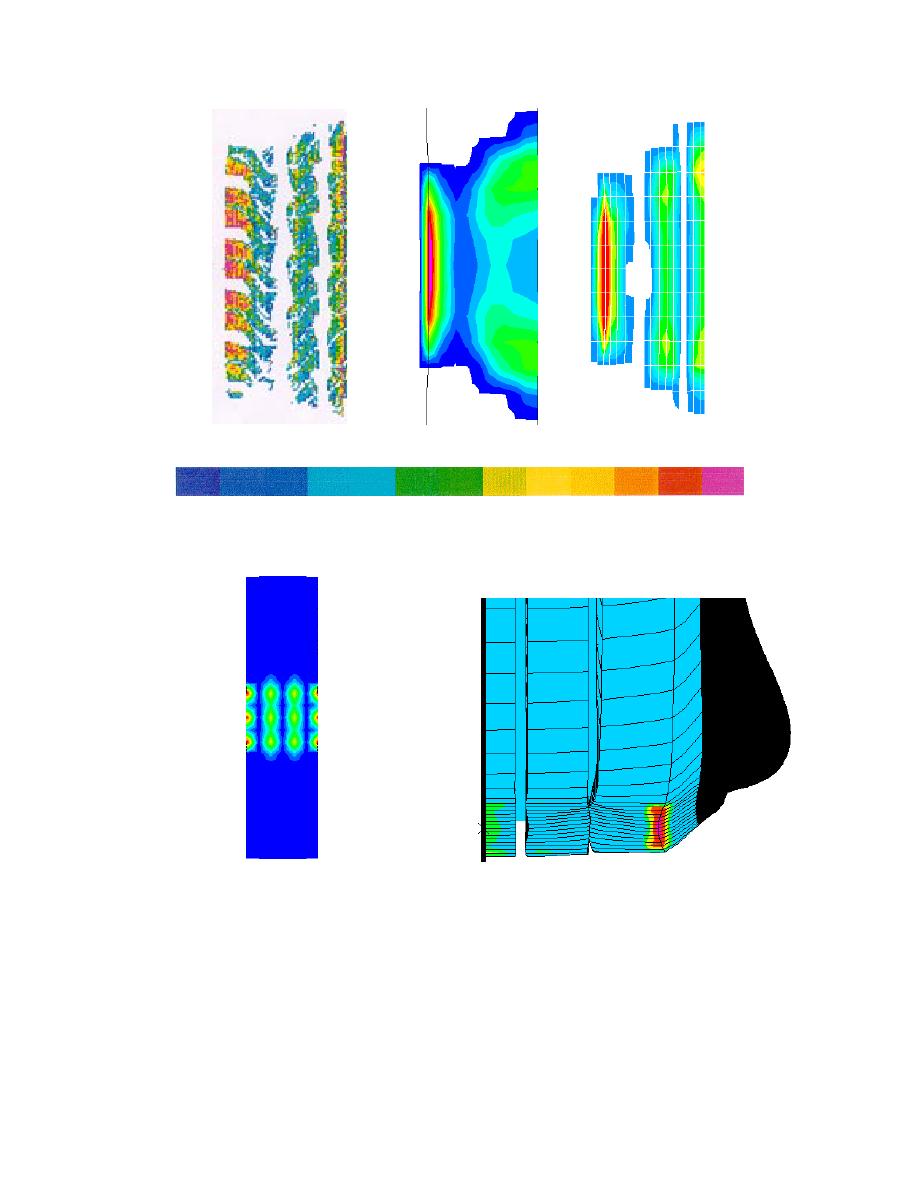
Measured
Smooth tread model
Ribbed tread model
7
69
131
193
262
324
386 448
510
572
641
703
765
kPa
Figure 52. Measured and modeled contact stress distribution for half carcass on a hard surface
(207 kPa inflation and 6627 N load).
Figure 54. Close-up view of the contact for the
Figure 53. Irregular stress contours generated by
ribbed tire model, showing buckling just inside
the ShoopDarnell model on a rigid surface (full
the shoulder area (half tire carcass).
carcass width).
gressively finer meshes fail to converge [similar be-
During contact on a rigid surface, the Shoop
havior was noted and explored by Alvarez Sanz
Darnell model suffered from buckling just inside the
(1999)]. The buckling behavior also occurs to a lim-
tire shoulder area, which strongly affected the contact
ited extent in the physical tire and in the modal
stress. Although a finer mesh would normally smooth
analysis tire models (seen in the contours in Figure
the contact stress contours, the buckling causes alter-
52). The buckling is worse at low inflation pressures
nate nodes to lift off the surface, resulting in the
and high loads (Fig. 54). The impact is minor for the
stress pattern shown in Figure 53. Eventually, pro-
39



 Previous Page
Previous Page
